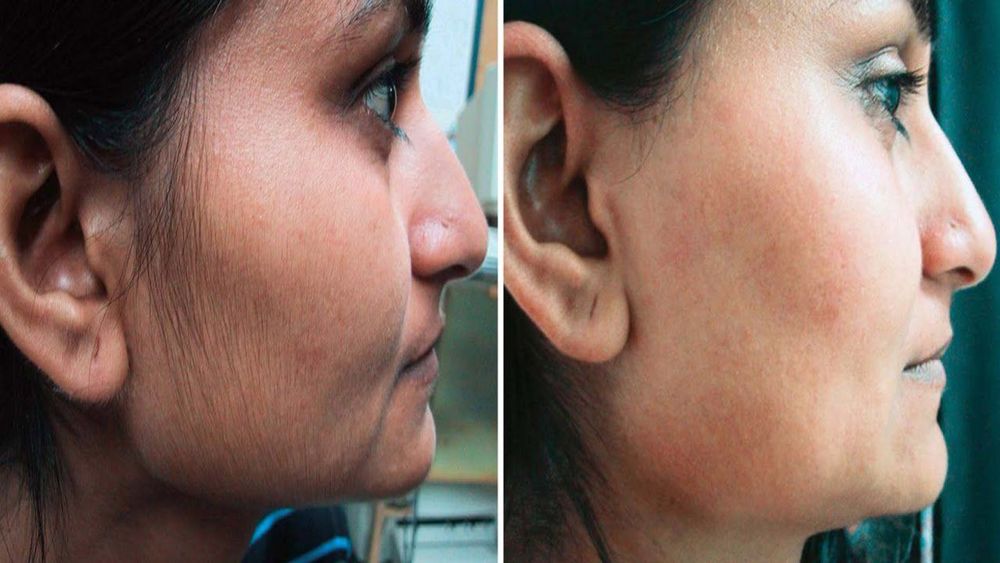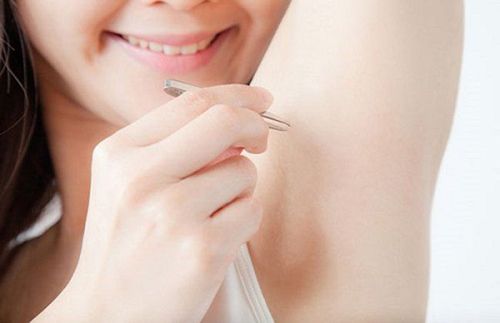This is an automatically translated article.
Eflornithine is a drug that slows down hair growth on a woman's face and under her chin. The drug has specific indications for each subject. Patients need to pay attention to some issues while taking the drug to ensure safety and minimize unwanted side effects.
1. Eflornithine drug
Eflornithine is a prescription drug, used to limit hair growth on the face as well as under the chin in women. Eflornithine helps to block a natural substance necessary for hair growth in a woman's skin, thereby slowing the growth of unwanted hair.
In particular, using the drug Eflornithine also helps affect hair growth and makes a woman's hair thinner and lighter. The drug does not work to remove hair, remove hair or cause hair loss. Eflornithine is not approved for use in children under 12 years of age.
2. Indications for the use of Eflornithine
Indications for the use of Eflornithine for women who have a lot of beard growth.

Eflornithine được dùng để hạn chế sự mọc lông trên mặt cũng như vùng dưới cằm của phụ nữ
3. Notes when using Eflornithine
3.1. Note when taking the drug Before taking Eflornithine, the patient should carefully read the information and how to use the medicine provided with the product, if there are any questions, they should ask the doctor directly or pharmacist for the most specific answer. The medication is administered by applying a thin layer to the affected area of the face and chin about twice a day, at least 8 hours apart, or as specifically directed by the treating physician. Eflornithine should not be applied for at least 5 minutes if the patient has undergone hair removal procedures such as plucking or shaving. Do not use Eflornithine rinse for at least 4 hours. Wash your hands immediately after applying Eflornithine. Eflornithine is only recommended for use on the skin, do not let the product get into the eyes, nose and mouth. If you are not careful to get the medicine on these areas, wash immediately with clean water several times, if there are symptoms of irritation, immediately contact the treating doctor for timely treatment measures. If you are using skin care products, cosmetics, moisturizers or sunscreens, wait until Eflornithine is completely dry before using these creams. Because Eflornithine is not a hair removal product, if a woman wants to get rid of her hair, she must continue to use techniques such as shaving, plucking, etc. during treatment with this medicine. It should be noted that, if you stop taking Eflornithine, the hair and hair will grow back afterwards. Improvements are likely to be noticeable over a period of 4 - 8 weeks as the drug works very slowly in the body. Eflornithine should be used exactly as directed by your doctor, not more often and for longer than previously prescribed because this will increase the risk of unwanted effects. Tell your doctor right away if the patient shows signs of skin irritation.
3.2 Common side effects Some common side effects when applying Eflornithine are skin burning, stinging, itching, redness..., these signs will disappear automatically after the first period of taking the drug, however, if the condition persists or gets worse, tell your doctor or pharmacist right away. Some more serious side effects when using Eflornithine that patients need to pay attention to are acne, folliculitis ... can occur at any time. Allergic reactions to Eflornithine are rare, but they can affect the patient's health a lot if not detected early. Some signs suggest an allergic reaction is taking place, such as rash, itching and swelling of some parts such as tongue, throat, face, difficulty breathing, dizziness ..., this time should take the patient to the hospital. nearest medical facility for assistance. In summary, the drug Eflornithine can prevent hair growth on the face of women, this is a prescription drug, topically used commonly today. However, it is important to be aware of unwanted effects that may occur while taking this drug.
Please dial HOTLINE for more information or register for an appointment HERE. Download MyVinmec app to make appointments faster and to manage your bookings easily.
Reference source: webmd.com












